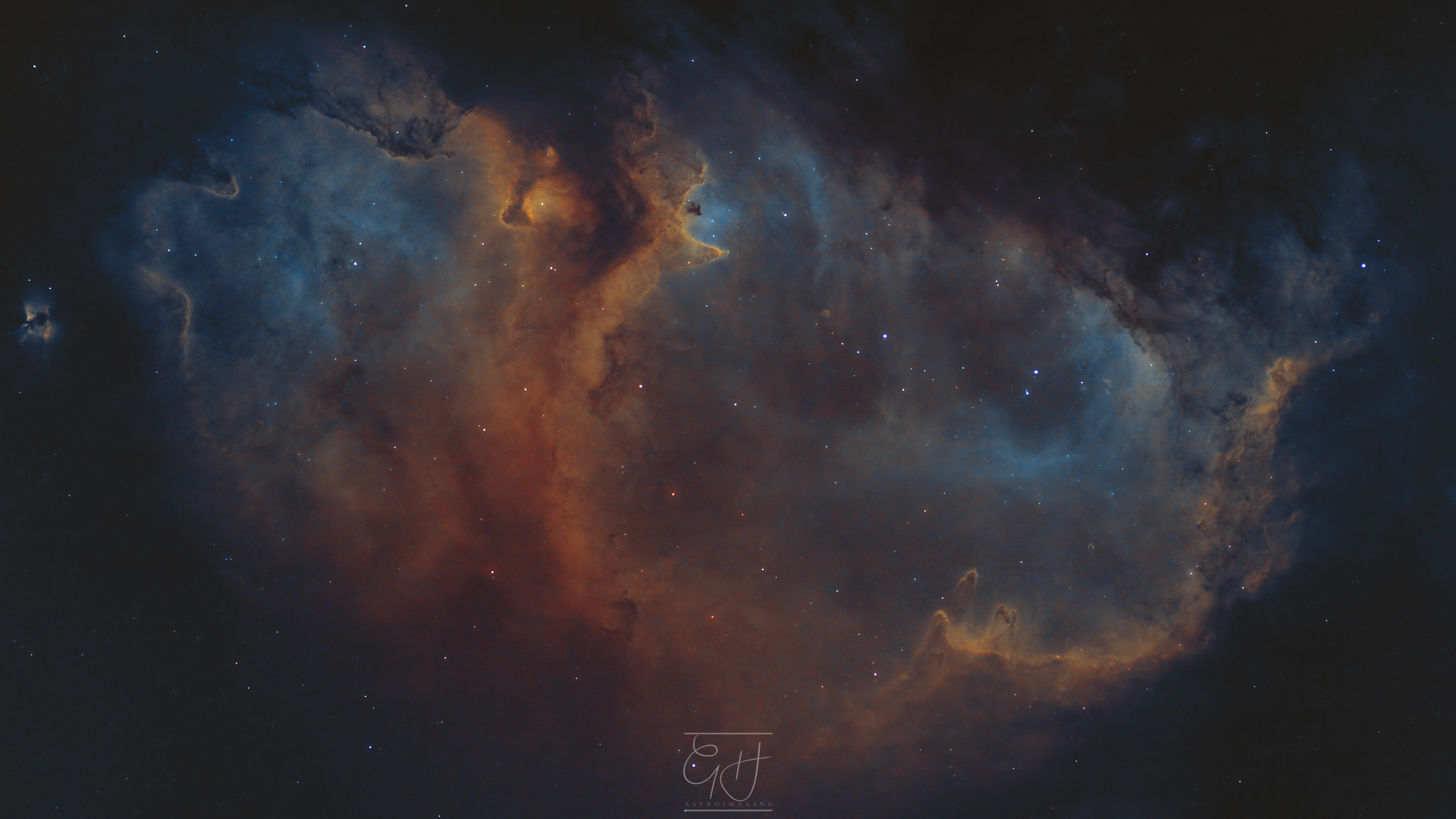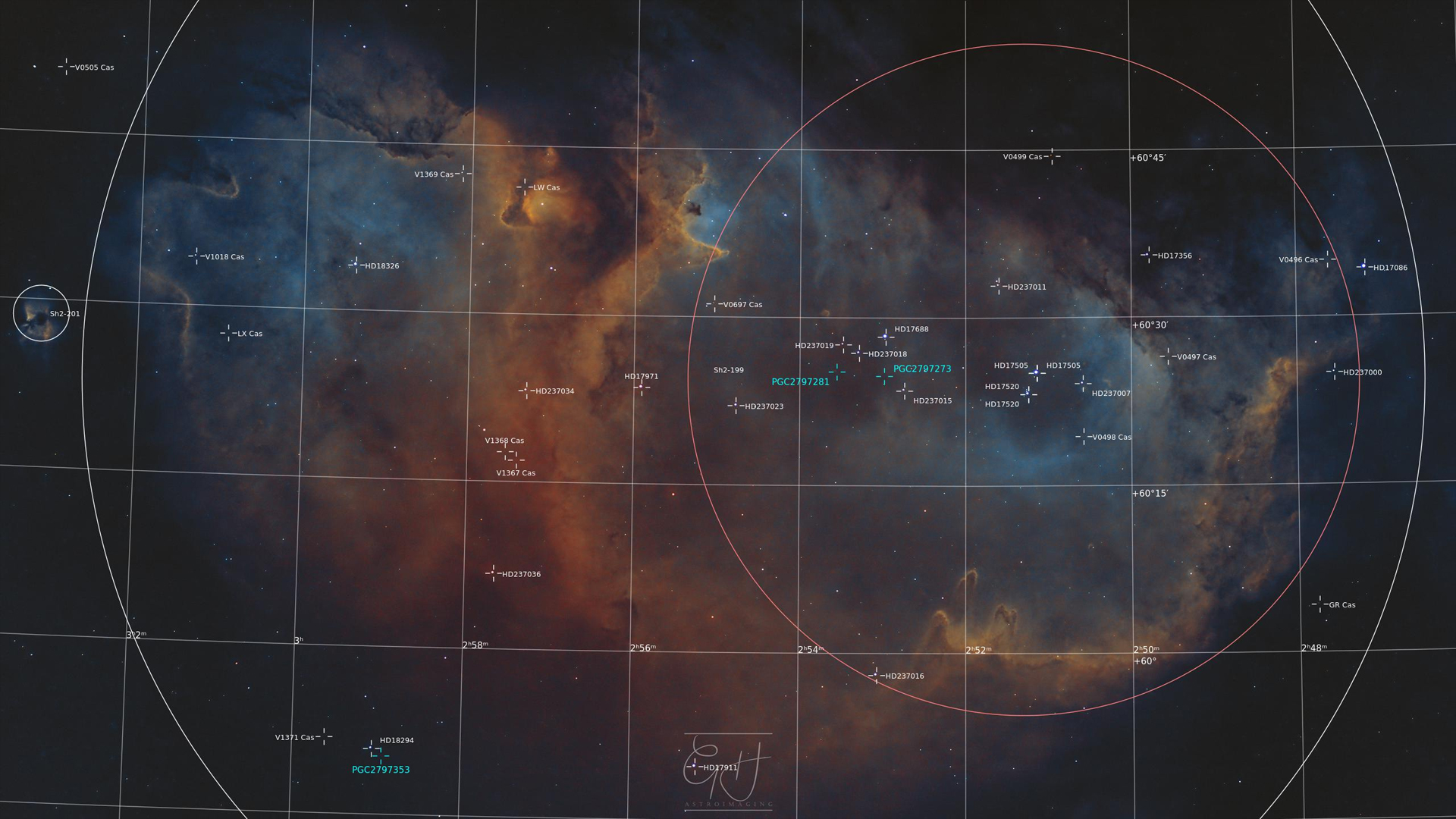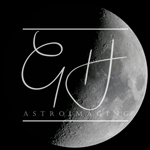The Soul Nebula, October 7 2022


The Soul Nebula, also known as Westerhout 5, Sh2-199 or LBN667, is an emission nebula in the constellation Cassiopeia.
More information about this object can be found on its Wikipedia page.
This image was the first step on my next phase of imaging. I was delighted to receive generous gifts for a milestone birthday in the summer of 2022 which contributed to the purchase of a cooled monochrome astrocamera, a filter wheel and a set of filters. This was something I had been very keen to pursue for a long time, but had to wait for the right opportunity. I was under no illusions that the new gear would make imaging easier - in fact the need to capture different sets of images using a range of different filters could be seen as making the task more difficult. What I was confident of though, was that if I could master the new skills required for processing separate monochrome images into a combined colour image, the end results would be of far superior quality than what I had been able to capture until this point.
One of the biggest benefits of the new camera is that it can be cooled and controlled at a very precise temperature, which not only reduces the thermal noise in each image, it makes it easier to calibrate any remaining thermal noise out by using temperature matched dark frames. Another benefit is that every pixel on the camera sensor is detecting light in the wavelength range of interest, whether that is a broad slice of the colour spectrum through a red, green or blue filter, or a narrow bandpass specific to the emission wavelength of a particular gas (hydrogen, oxygen or sulphur with the filters I have). This is not the case when imaging with a traditional colour camera. The sensor in a standard DSLR (or even a colour astrocamera) has something called a Bayer Filter that sits over it, making each pixel sensitive to either red, green or blue light.
The creation of the colour image requires that the raw data captured by the sensor is 'debayered' or 'demosaiced'. What this means is that whilst each pixel only captures signal for one colour, it is assigned values for the other 2 colours by an interpolation algorithm working on values from neighbouring pixels. For normal daylight photography this works very well, but for astrophotography it effectively reduces the resolution that can be captured.
Unsurprisingly, the time to process this image was significantly longer than I had become used to. I now had complete freedom to process the different colour channels independently from each other, and then recombine them to produce a final image. There was a large amount of trial and error involved in this, but I think the final result which used the narrowband filters to create the detail of the nebula, and the red, green and blue filters to create accurate star colours, can probably be considered a successful first attempt at this new (for me) and exciting imaging technique.
You can view this image in the WorldWideTelescope by clicking here.










Sign in to enable commenting